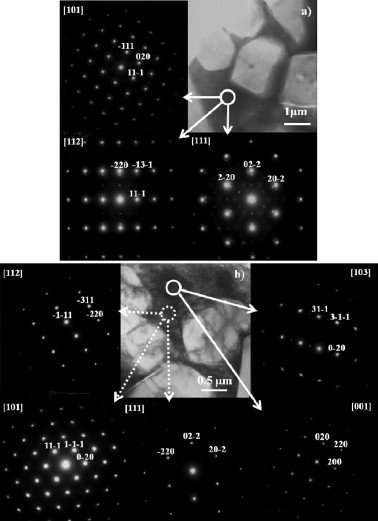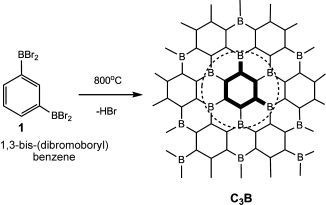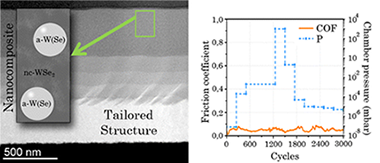Artículos SCI
2015
2015
Química de Superficies y Catálisis
Mono and bimetallic Cu-Ni structured catalysts for the water gas shift reaction
O. Arbeláez, T.R. Reina, S. Ivanova, F. Bustamante, A.L. Villa, M.A. Centeno, J.A. OdriozolaApplied Catalysis A-General, 497 (2015) 1-9
Show abstract ▽

The water-gas shift (WGS) reaction over structured Cu, Ni, and bimetallic Cu-Ni supported on active carbon (AC) catalysts was investigated. The structured catalysts were prepared in pellets form and applied in the medium range WGS reaction. A good activity in the 180–350 °C temperature range was registered being the bimetallic Cu-Ni:2-1/AC catalyst the best catalyst. The presence of Cu mitigates the methanation activity of Ni favoring the shift process. In addition the active carbon gasification reaction was not observed for the Cu-containing catalyst converting the active carbon in a very convenient support for the WGS reaction. The stability of the bimetallic Cu-Ni:2-1/AC catalyst under continuous operation conditions, as well as its tolerance towards start/stop cycles was also evaluated.
Mayo, 2015 | DOI: 10.1016/j.apcata.2015.02.041
Reactividad de Sólidos
Toughening of complete solid solution cermets by graphite addition
Chicardi, E; Torres, Y; Sayagues, MJ; Medri, V; Melandri, C; Cordoba, JM; Gotor, FJChemical Engineering Journal, 267 (2015) 297-305
Show abstract ▽

(Ti0.95Ta0.05)(C0.5N0.5)-Co complete solid solution cermets (CSCs) were developed by a mechanochemical synthesis process and a pressureless sintering method. The effect of different percentages of graphite used as a sintering additive on the nature of the binder phase and the mechanical properties of the cermets was investigated. Microstructural and mechanical characterisations were carried out by X-ray diffraction, optical microscopy, scanning electron microscopy, transmission electron microscopy, energy-dispersive X-ray spectroscopy, Vickers hardness, indentation fracture toughness and nanoindentation. The addition of graphite modified the carbon activity during sintering, reducing the dissolution of carbonitride ceramic particles into the molten binder. The amount of Ti and Ta remaining in the binder after sintering gradually decreased as the amount of graphite added increased, which induced a change in the nature of the binder phase. When no graphite was added, the binder consisted of the brittle TixTa1−xCo2 intermetallic phase. With the increase in the amount of graphite added, the formation of more ductile phases, such as TixTa1−xCo3 and α-Co, was observed, causing a significant improvement in the toughness of the cermets.
Mayo, 2015 | DOI: 10.1016/j.cej.2015.01.022
Materiales y Procesos Catalíticos de Interés Ambiental y Energético - Nanotecnología en Superficies y Plasma
Theory and Practice: Bulk Synthesis of C3B and its H2- and Li-Storage Capacity
King, TC; Matthews, PD; Glass, H; Cormack, JA; Holgado, JP; Leskes, M; Griffin, JM; Scherman, OA; Barker, PD; Grey, CP; Dutton, SE; Lambert, RM; Tustin, G; Alavi, A; Wright, DSAngewandte Chemie International Edition, 54 (2015) 5919-5923
Show abstract ▽

Previous theoretical studies of C3B have suggested that boron-doped graphite is a promising H2- and Li-storage material, with large maximum capacities. These characteristics could lead to exciting applications as a lightweight H2-storage material for automotive engines and as an anode in a new generation of batteries. However, for these applications to be realized a synthetic route to bulk C3B must be developed. Here we show the thermolysis of a single-source precursor (1,3-(BBr2)2C6H4) to produce graphitic C3B, thus allowing the characteristics of this elusive material to be tested for the first time. C3B was found to be compositionally uniform but turbostratically disordered. Contrary to theoretical expectations, the H2- and Li-storage capacities are lower than anticipated, results that can partially be explained by the disordered nature of the material. This work suggests that to model the properties of graphitic materials more realistically, the possibility of disorder must be considered.
Mayo, 2015 | DOI: 10.1002/anie.201412200
Materiales de Diseño para la Energía y Medioambiente
Self-Assembling of Tetradecylammonium Chain on Swelling High Charge Micas (Na-Mica-3 and Na-Mica-2): Effect of Alkylammonium Concentration and Mica Layer Charge
Pazos, MC; Cota, A; Osuna, FJ; Pavon, E; Alba, MDLangmuir, 31 (2015) 4394-4401
Show abstract ▽
A family of tetradecylammonium micas is synthesized using synthetic swelling micas with high layer charge (NanSi8-nAln,Mg6F4O20 center dot XH2O, where n = 2 and 3) exchanged with tetradecylammonium cations. The molecular arrangement of the surfactant is,elucidated on the basis of XRD patterns and DTA. The ordering conformation of the surfactant molecules into the interlayer space of Micas is investigated by IR/FT, C-13, Al-27, and Si-29 MAS NMR. The structural arrangement of the tetradecylammonium cation in the interlayer space of high-charge micas is more sensitive to the effect of the mica layer charge at high concentration. The surfactant arrangement is found to follow the bilayer-paraffin model for all values of layer charge and surfactant concentration. However, at initial concentration below the mica CEC, a lateral monolayer is also observed. The amount of ordered conformation all-trans is directly proportional to the layer charge and surfactant concentration.
Abril, 2015 | DOI: 10.1021/acs.langmuir.5b00224
Materiales Nanoestructurados y Microestructura
Self-lubricity of WSex nanocomposite coatings
S. Dominguez-Meister; M. Conte; A. Igartua; T.C. Rojas; J.C. Sánchez-LópezACS Applied Materials & Interfaces, 7 (2015) 7979-7986
Show abstract ▽

Transition metal chalcogenides with lamellar structure are known for their use in tribological applications although limited to vacuum due to their easy degradation in the presence of oxygen and/or moisture. Here we present a tailored WSex coating with low friction (0.07) and low wear rates (3 × 10–7 mm3 Nm–1) even in ambient air. To understand the low friction behavior and lower chemical reactivity a tribological study is carried out in a high-vacuum tribometer under variable pressure (atmospheric pressure to 1 × 10–8 mbar). A detailed investigation of the film nanostructure and composition by advanced transmission electron microscopy techniques with nanoscale resolution determined that the topmost layer is formed by nanocrystals of WSe2 embedded in an amorphous matrix richer in W, a-W(Se). After the friction test, an increased crystalline order and orientation of WSe2 lamellas along the sliding direction were observed in the interfacial region. On the basis of high angle annular dark field, scanning transmission electron microscopy, and energy dispersive X-ray analysis, the release of W atoms from the interstitial basal planes of the a-W(Se) phase is proposed. These W atoms reaching the surface, play a sacrificial role preventing the lubricant WSe2 phase from oxidation. The increase of the WSe2 crystalline order and the buffer effect of W capturing oxygen atoms would explain the enhanced chemical and tribological response of this designed nanocomposite material.
Abril, 2015 | DOI: 10.1021/am508939s
- ‹ anterior
- 250 of 420
- siguiente ›














